AF is going to analyze the tactical theory and the patterns of the 4-2-3-1 formation.
Possession throughout the thirds
After the ball has left from the goalkeeper, the carrier of it has to transfer it forward. Supposing that the ball is on the feet of one of the two centre-backs or at the full-back, their first job is to make sure that they will not lose the ball in a dangerous area. The ideal scenario for the carrier of the ball is to pass to the defensive midfielder, who is moving in a deep position. By doing so, the centre-back will achieve to transfer the ball into a key player. That will help the team to transfer the ball throughout the thirds.
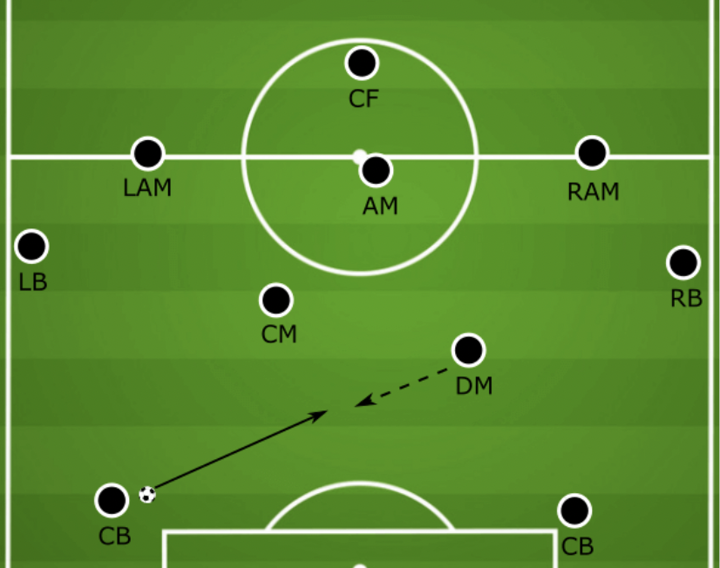
When the defensive midfielder receives the ball, he has several options in different combinations that could lead to a dangerous situation in the opposition’s half. The first option evolves the attacking midfielder, who is positioned in the midfield area: The defensive midfielder passes to him, and he tries to play the ball at the central midfielder, who is positioned a bit deeper and wider in the field. By transferring the ball back and forth, the players achieve to disorganise the opposition’s defensive structure, as the ball is moving quicker than the players of the opponent can adjust. When the central midfielder receives the ball, he has to pass it into the wide areas, where the full-back has already started the run to overlap the wide attacking midfielder. This quick combination that demands the full-backs to have a high position in the field.

The second option is for a team that the manager does not want the full-backs to play in such a high position. To get the ball into the same area as before, the centre forward must be evolved in this scenario: The striker is moving deep in the field to support his teammates while in possession. On that way, the centre forward not only supports the team but also does he create free space in his back that one of his teammates could take advantage of. The defensive midfielder passes to the centre forward. The striker tries to find with a quick back pass to the attacking midfielder, who supports him on a diagonal position. The number 10 passes a forward pass to the wide attacking midfielder, who has started his run. The wide attacking midfielder can move either wide, either to take advantage of the free space that the striker created.
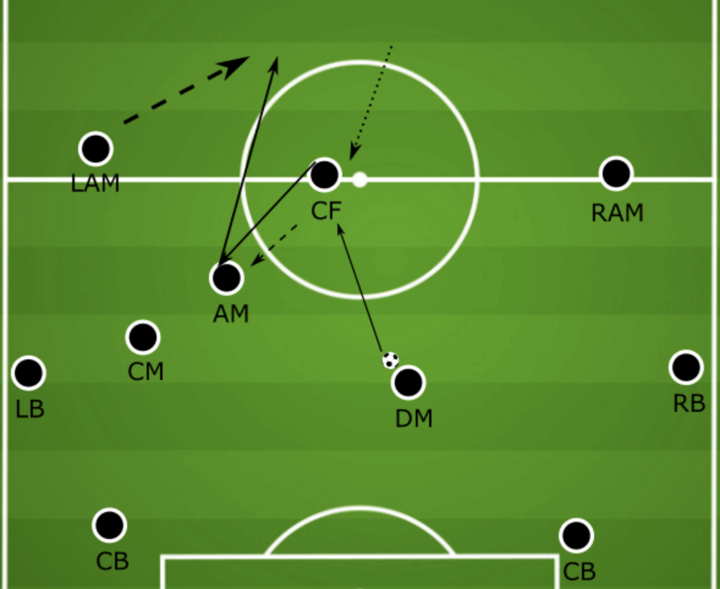
A third option that a team could develop the attack with the 4-2-3-1 formation is with the direct contribution of one of the full-backs. Some teams try to keep a compact shape when defending, and it is tough for the midfielders to exploit the space. For that reason, a full-back could step inner in the field and become an extra player. The defensive midfielder will do a pass at the attacking midfielder. He is going to pass to the central midfielder who is moving in a diagonal position for instant support, and then he will pass at the full-back, who stepped at the inner axis of the field to overload the area. The striker on that scenario is a bit higher in the field. The full-back and the striker will try to have a combination game to transfer the ball at the flanks, where the wide attacking midfielder has already started his run.
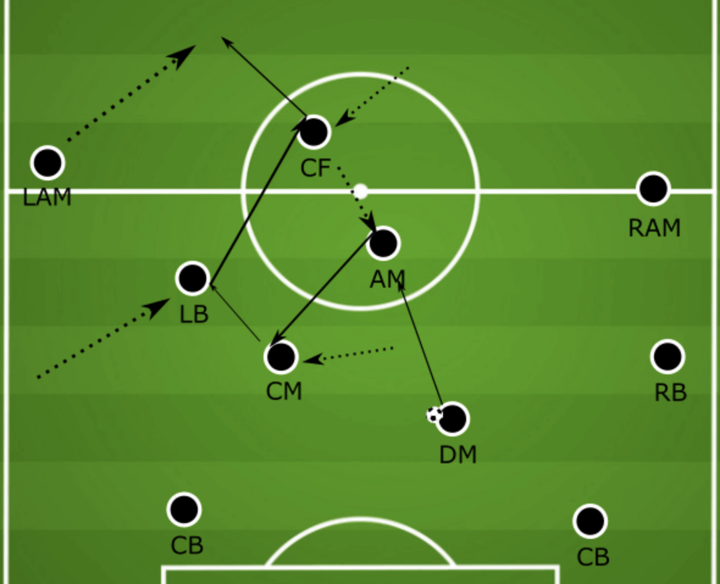
Those were some possible scenarios that could happen when the opposition team is pressing up high. There will be some teams that will give space and will wait for their opponent with a medium defensive block. That will give the flexibility to the team to step higher in the field, and pressure the opponent with more players in his half. For example, if a team that plays with the full-backs high, they could take a high and wide position in the field, while the wide attacking midfielders would be inner and closer to the opposition’s box. By taking such a position, the wide attacking midfielders could receive the ball closer to the opponent’s box. Taking as a fact the characteristics of those players, we could see how dangerous this could be for the opponent. The only player that is deeper in the field is the defensive midfielder, who tries to retain a balance between the line. The players that try to break the opponent’s line are the central midfielder and the attacking midfielder that are having a position between the half of the field, and the box. After this set-up, the formation seems more like a 3-2-5, with many players pushing around the opponent’s box.

A manager that would not prefer his full-backs high and wide on the pitch, he probably would choose another set-up: with his full-backs in a deeper position and the wide attacking midfielders in the flanks. That would give the chance to them to get the ball wide in the field and go for 1 vs 1 situations and deliver the ball into the box. On that set-up, the opposition is getting stretched again, but it is not so aggressive as the previous one, with at least five players in the final third of the field.
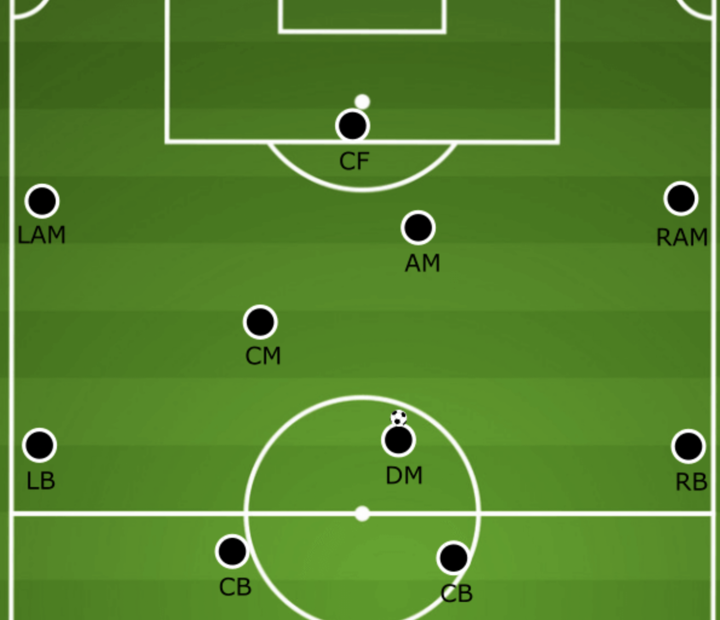
At the final third of the field, the 4-2-3-1 formation provides many different options to finish a chance. For example, is not only two or three players that can be in the box and try to score a goal. Depending on the manager’s philosophy, we could get up to five players around the box. This is a dangerous situation for the opposition to face, as the defenders have to face the striker, the attacking and the wide attacking midfielder, the central midfielder that probably is at the edge of the box, and maybe the full-back that is coming from behind.
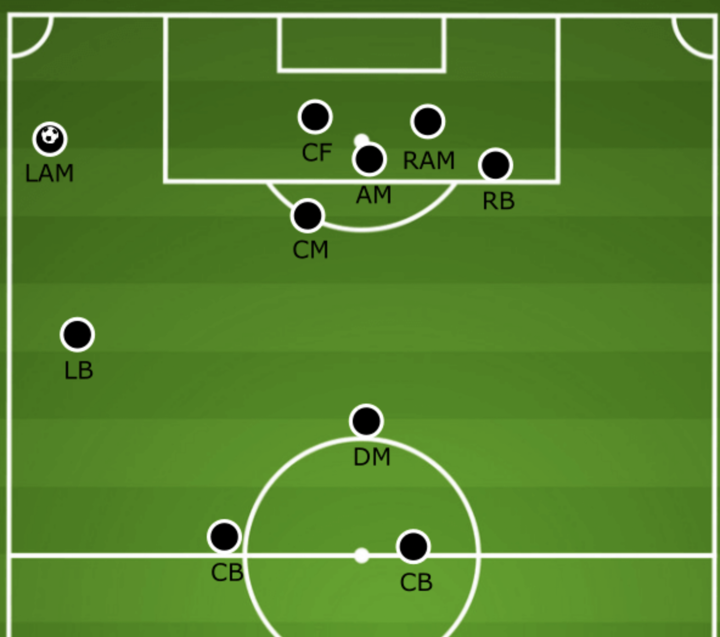
The 4-2-3-1 formation without the ball
The 4-2-3-1 formation is slightly different from the other formation, as it is a formation that has an extra line between the forward and the midfielders. That the is the line with the attacking midfielders. That gives extra flexibility to the formation and especially when a manager has as a philosophy to pressure high in the field. If this is happening, then a manager probably would set-up his team very high on the pitch. To do so, the defensive line has to be around half of the field. That would put more pressure at the opposition. The striker, as the first defender has to manipulate the opponent, and drive them with the ball in the space that he wants. The attacking midfielders are high in the pitch and put instant pressure on whoever receives the ball. The defensive and central midfielder are marking their players in their space.
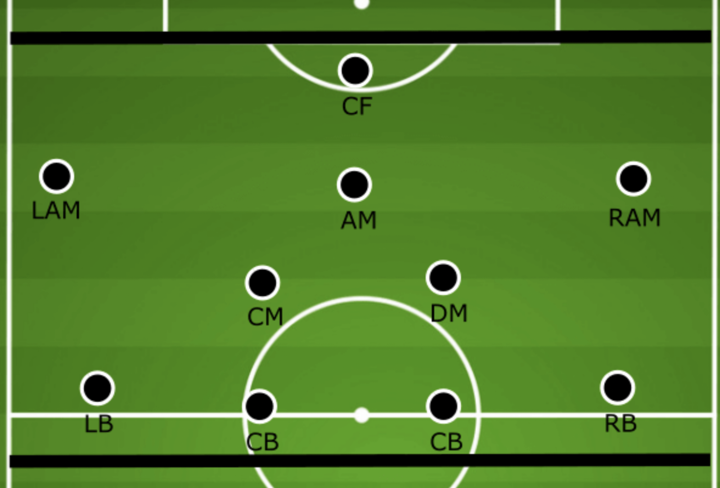
Going a bit deeper in the field, we can see the flexibility that this formation gives: Most of the teams that decide to defend with a medium defensive block, they do it by turning the 4-2-3-1 formation, into a 4-4-2. The attacking midfielder comes next to the striker, while the two wide attacking midfielders step a bit deeper next to the central and defensive midfielders. That formation is not something standard, as we can see. For example, if the ball goes at the flanks, then one of the wide attacking midfielders will step out and will try to push away the carrier of the ball. So, in that scenario, the 4-4-2 is turning into a 4-3-3, as the midfielders and the other wide attacking midfielder are stepping behind him to support his back.

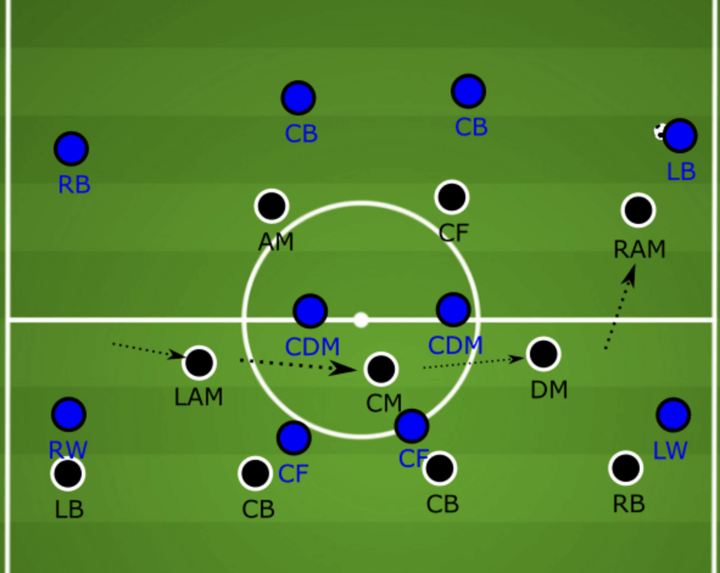
Stepping deeper into the field, this adjustability is becoming more compact. This is because the players are forming a compact low defensive block from at least eight players, who are at a close distance from each other. Moreover, the two midfielders that are taking a position in front of the two centre-backs gives the team extra compactness, as four players in the central axis are creating a box in front of the goalkeeper. In a low defensive block, the only players that are a bit higher in the pitch are the attacking midfielder and the centre-forward to counterattack.
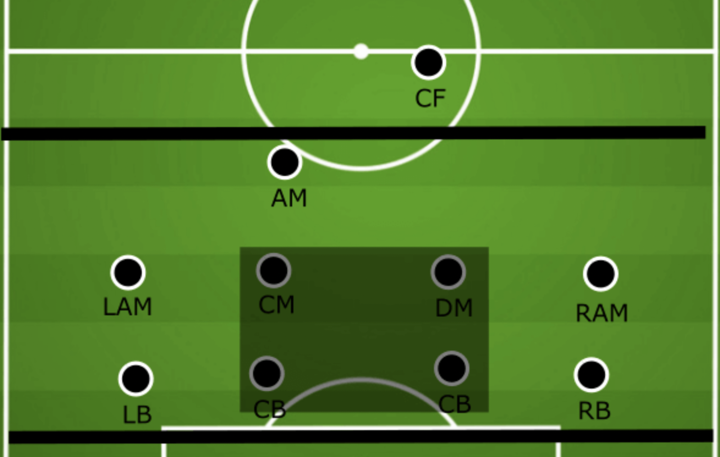
Conclusion
The 4-2-3-1 formation is a tactical shape that gives a lot of options to the managers, and this is the reason why it is so popular in modern football. We saw many managers with different philosophies use it. Some managers prefer to defend and counterattack, while others to dominate in the field, but both have used this formation with great success. This is something that shows the great flexibility of this formation.
